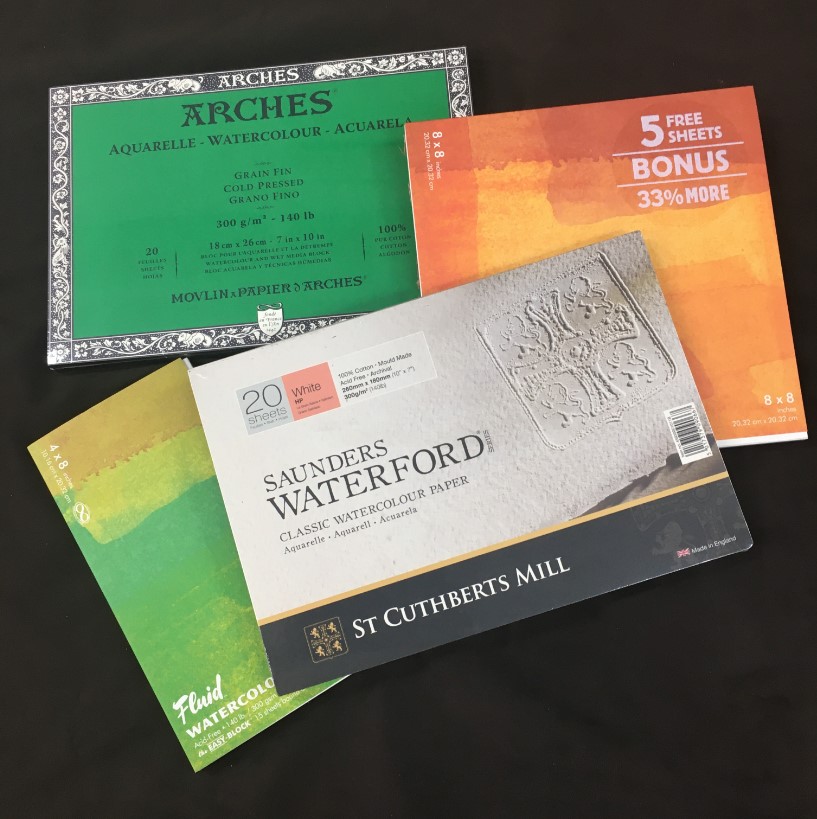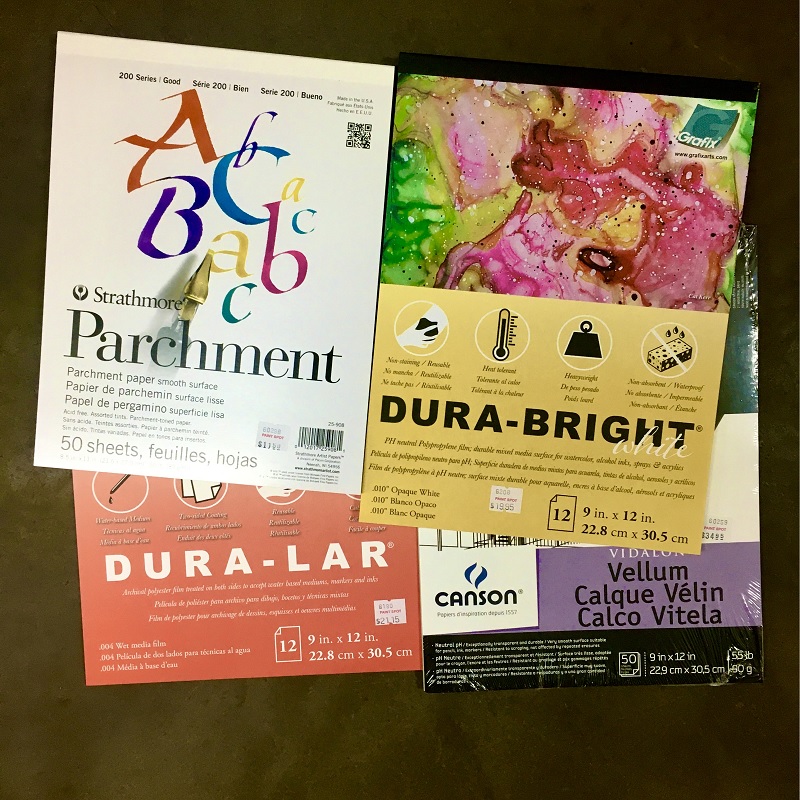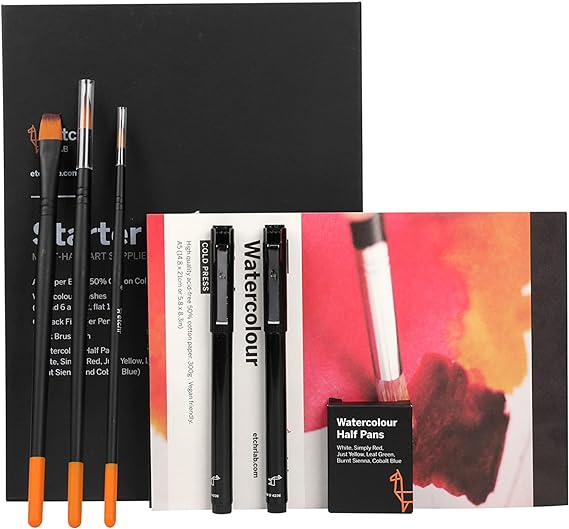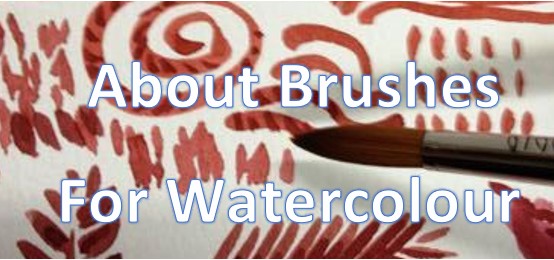The best reason to choose any painting medium is that you have an affinity for it: you have seen it at work, admire it, and want to use it.
1. Why choose watercolour paint?
Watercolour is the one to choose if you want easily mixed, easily applied colour, simplicity of preparation and luminous results. If you like to do fine work on relatively small surfaces, watercolour is a medium you will enjoy. Painting outdoors is easy with watercolours, with only a few essentials; paint, water, paper, board, and brushes. Painting anytime is possible, since the paper on which you work needs little preparation, unlike an oil painting canvas for example.
Here is a one minute video demonstrating watercolour basics.
2. What is watercolour paint?
Watercolour is a blend of dry pigment powder dispersed in a water-soluble binder, usually gum arabic. Watercolour’s luminosity results from its transparency and the purity of its pigments. The brightness of the paper shines through the minutely broken surface of the paint, adding to the impression of light-filled paintings. Increase paint flow by adding ox gall. Increase pigment solubility by adding honey or glycerine. Use Chinese white to make watercolour opaque. Gouache can intermixed with watercolour on the same painting.
3. Is watercolour difficult?
Watercolour can seem difficult because the artist needs a good knowledge of pigments and techniques to create effective watercolour paintings. On the other hand, the spontaneous sketch done in watercolours can perfectly capture a transient subject, such as movement or weather effects in a landscape. The watercolourist must gain knowledge of the actions of water itself in the context of their medium in order to create satisfying works. Try staining and blotting, creating effects with watercolour that are difficult to duplicate in other mediums.
4. Is watercolour paint expensive?
As with other paints, the student grade of watercolours is less expensive than the professional grade – and has less pure pigment, thereby making for less vibrantly coloured paintings. Also, some pigments, like cadmiums, are expensive, but closely matched substitutions are available. There are two approaches to selecting paint grades. as a beginner watercolourist. Buy a small number of professional paints and practice mixing your colours. Reduce time spent learning about mixing – select a broad selection of student-grade paints. Another option is sets, which represent a savings over individually purchased paints. Watercolours come in small packages – either small pans or small tubes – but the pigment load is high in either case.
5. What do I need to make a watercolour painting, besides watercolours?
Paper made for watercolour is the best choice. Choose from various sizes, weights and finishes, individual sheets, pads, or blocks. Natural hair brushes with strong capillary action can draw up and hold quantities of water. Select brushes that release paint onto the paper for a long time, especially when the artist is covering a large area of paper with a wash of colour. Good synthetic brushes and brushes that mix synthetic and natural hair are also available. A number of brush sizes and shapes are designed just for watercolours, because of the fine lines and small marks often used in watercolour painting. A palette is handy for laying out and mixing paint. A purpose-designed palette with a lid, such as Sta-Wet, can help keep your paints from drying out. A lidded container for water is handy.
6. How can I keep the paper from wrinkling while I paint?
Water curls, buckles and cockles paper, so it’s important to stretch paper. To counter this tendency, you need to soak your paper first to expand its fibres, then tape it to a board with gummed butcher’s tape. Heavy paper, e.g., 300 lb., is less likely to cockle. Watercolour blocks are sealed on two or more sides, making them another good solution. Blocks are also convenient to carry when you are painting on site or outdoors.

7. Are there any drawbacks to watercolour paint?
Watercolour painting does require practice and knowhow. If you lack the desire or patience to learn it, you may not be happy with the results of your efforts. If you are used to being able to change your work substantially, the way an oil or acrylic painter can, watercolour might feel frustrating at first. On the other hand, there are so many interesting watercolour techniques to explore: dry-brush, scumbling, dropping, spraying, blotting, pouring, and so on. And if you find the different kinds of papers and brushes intriguing, and you love the luminosity of the medium, you will find watercolour an interesting, not discouraging, challenge.
8. Will watercolour work only on watercolour paper?
Watercolour can be applied to other surfaces, such as canvas, Yupo paper or Dura-Lar, but watercolour paper is made to suit the nature of watercolour paint. Other papers accept watercolour; a mixed media sketchbook is excellent for practicing or journaling.

9. What about technique?
Historically, watercolour painting is very old, and therefore has given rise to many techniques, several of which exploit the liquidity of water, while others exploit the fine detailing available to the watercolourist. Watercolour has long been associated with painting from nature or from natural objects. Botanical painting of great detail and virtuosity, Albrecht Durer’s Young Hare and J.M.W. Turner’s brilliant landscape studies are historical examples of superb watercolour paintings. Contemporary watercolour painting is an exploration of all the many aspects of watercolour. Watercolour is not a medium that is bound by tradition: the artist – that is you – can explore many options.
10. Should I worry about watercolours deteriorating?
Watercolours work best on watercolour paper, which is archival and long-lasting. Treat it respectfully, though, and consider how you handle it to avoid tears and creases. Good quality watercolours contain strong pigments, so they are lasting, too. It is wise to check the lightfastness of your pigments to ensure they will not be prone to fading. If you are displaying watercolour paintings, avoid placing them in the sun. Some of the most ancient painting in the world is water-based, so yours, properly handled, can be expected to endure as well.
Find all of our watercolour paints and options here.
More Tips on watercolour
- Watercolour Masking Fluid
- Watercolour Pans vs Tubes
- Watercolour 12 School Projects
- Varnishing Watercolours
- Watercolour Brushes
_________________________
Kim Fjordbotten: As the owner of The Paint Spot, Kim Fjordbotten is passionate about helping artists use materials and make art. She is available as a speaker and educator for teachers and art associations. The Paint Spot offers exhibitions, classes, and beautiful art materials to inspire your creativity.
Notice you are not bombarded with advertising while sourcing this information. Please help us by purchasing your art supplies from The Paint Spot. We really appreciate your business and it means we can keep making educational posts for free. Thank you.


